
How to Use LF347N Op Amp: Examples, Pinouts, and Specs
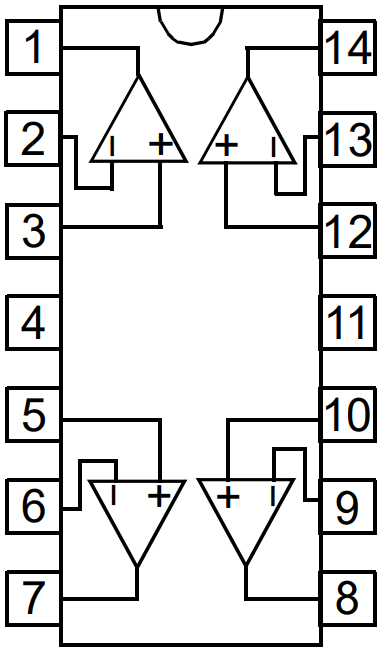
 Design with LF347N Op Amp in Cirkit Designer
Design with LF347N Op Amp in Cirkit DesignerIntroduction
The LF347N is a quad operational amplifier (op-amp) designed for high-performance analog signal processing. It features low noise, low distortion, and high input impedance, making it ideal for applications requiring precision and reliability. The LF347N operates over a wide supply voltage range and is well-suited for audio processing, active filters, instrumentation amplifiers, and other analog circuits.
Explore Projects Built with LF347N Op Amp
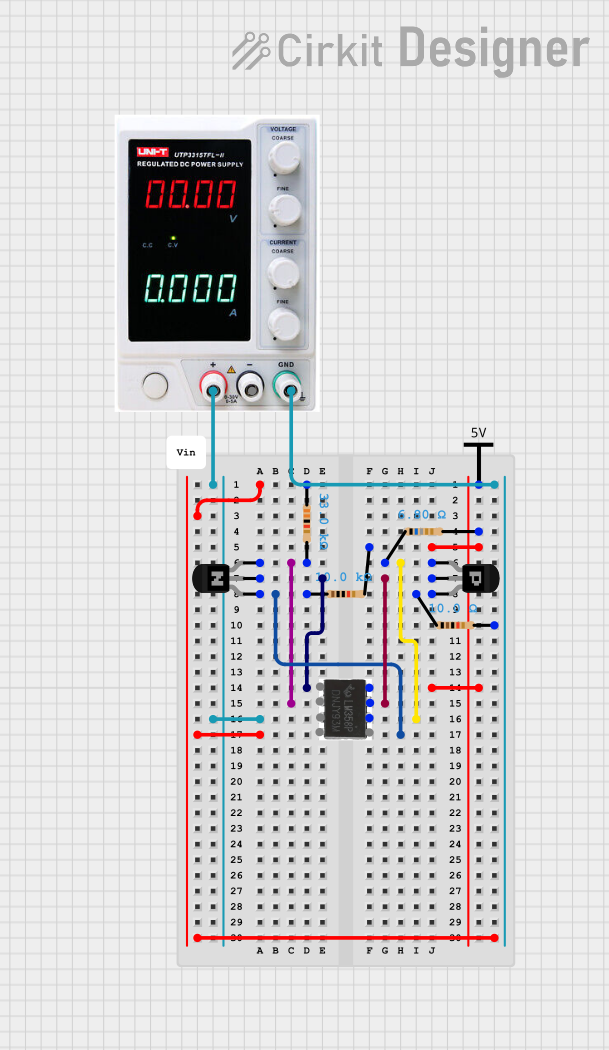
 Open Project in Cirkit Designer
Open Project in Cirkit Designer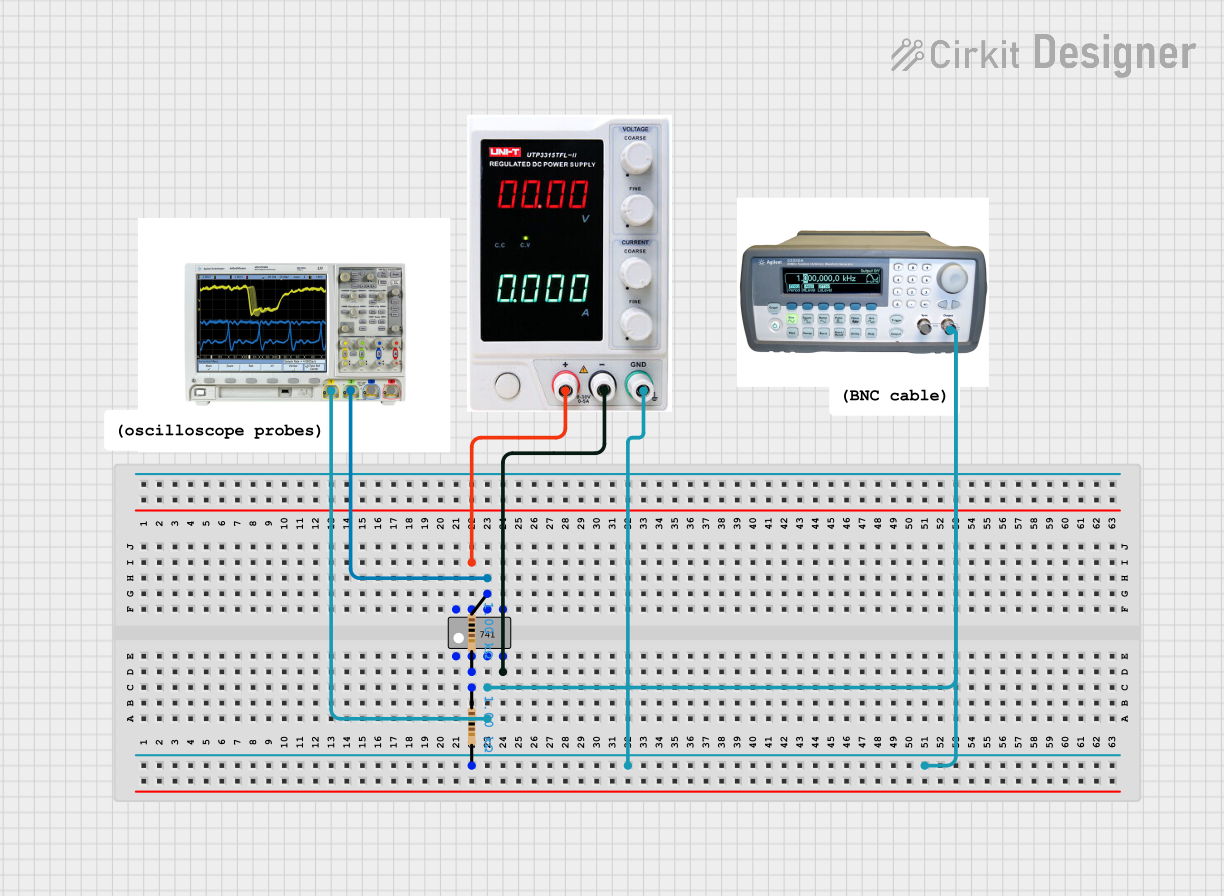
 Open Project in Cirkit Designer
Open Project in Cirkit Designer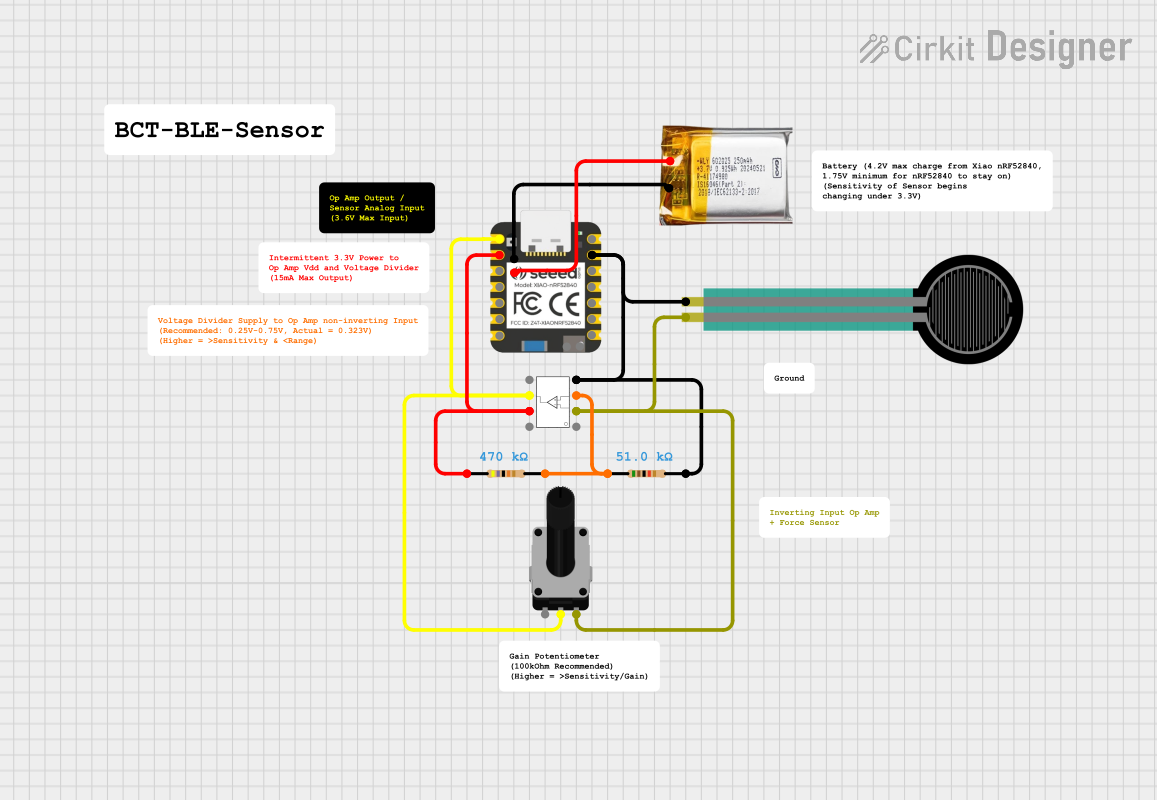
 Open Project in Cirkit Designer
Open Project in Cirkit Designer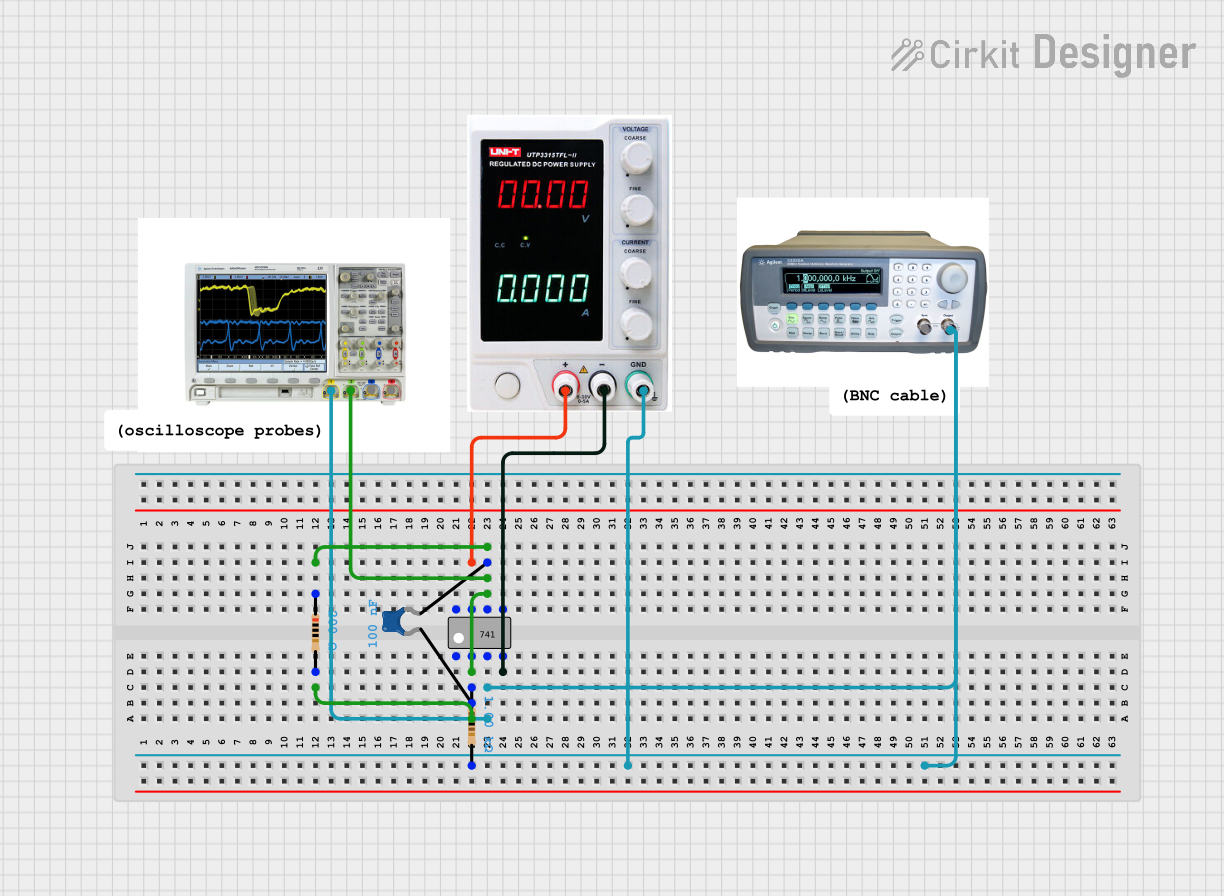
 Open Project in Cirkit Designer
Open Project in Cirkit DesignerExplore Projects Built with LF347N Op Amp

 Open Project in Cirkit Designer
Open Project in Cirkit Designer
 Open Project in Cirkit Designer
Open Project in Cirkit Designer
 Open Project in Cirkit Designer
Open Project in Cirkit Designer
 Open Project in Cirkit Designer
Open Project in Cirkit DesignerCommon Applications
- Audio signal amplification and processing
- Active filters (low-pass, high-pass, band-pass)
- Instrumentation amplifiers
- Analog computation circuits
- Voltage followers (buffer circuits)
Technical Specifications
Key Specifications
| Parameter | Value |
|---|---|
| Supply Voltage Range | ±3V to ±18V |
| Input Offset Voltage | 5 mV (typical) |
| Input Bias Current | 50 pA (typical) |
| Input Impedance | 10⁶ MΩ (typical) |
| Output Impedance | 200 Ω (typical) |
| Slew Rate | 13 V/μs (typical) |
| Gain Bandwidth Product | 4 MHz (typical) |
| Operating Temperature Range | 0°C to +70°C |
| Package Type | DIP-14 |
Pin Configuration and Descriptions
The LF347N is housed in a 14-pin Dual Inline Package (DIP-14). Below is the pinout and description:
| Pin Number | Pin Name | Description |
|---|---|---|
| 1 | Output 1 | Output of Op-Amp 1 |
| 2 | Inverting Input 1 | Inverting input of Op-Amp 1 |
| 3 | Non-Inverting Input 1 | Non-inverting input of Op-Amp 1 |
| 4 | V- (Negative Supply) | Negative power supply |
| 5 | Non-Inverting Input 2 | Non-inverting input of Op-Amp 2 |
| 6 | Inverting Input 2 | Inverting input of Op-Amp 2 |
| 7 | Output 2 | Output of Op-Amp 2 |
| 8 | Output 3 | Output of Op-Amp 3 |
| 9 | Inverting Input 3 | Inverting input of Op-Amp 3 |
| 10 | Non-Inverting Input 3 | Non-inverting input of Op-Amp 3 |
| 11 | V+ (Positive Supply) | Positive power supply |
| 12 | Non-Inverting Input 4 | Non-inverting input of Op-Amp 4 |
| 13 | Inverting Input 4 | Inverting input of Op-Amp 4 |
| 14 | Output 4 | Output of Op-Amp 4 |
Usage Instructions
Using the LF347N in a Circuit
- Power Supply: Connect the positive supply voltage (V+) to pin 11 and the negative supply voltage (V-) to pin 4. The LF347N supports a wide supply voltage range (e.g., ±12V or ±15V).
- Input Connections: Connect the input signal to the non-inverting (pins 3, 5, 10, or 12) or inverting inputs (pins 2, 6, 9, or 13) depending on the desired configuration (e.g., inverting or non-inverting amplifier).
- Output Connections: The amplified signal will be available at the corresponding output pins (pins 1, 7, 8, or 14).
- Feedback Network: Use resistors and/or capacitors in the feedback loop to set the gain and frequency response of the amplifier.
- Bypass Capacitors: Place decoupling capacitors (e.g., 0.1 µF) close to the power supply pins to reduce noise and improve stability.
Example: Non-Inverting Amplifier Circuit
Below is an example of using the LF347N as a non-inverting amplifier with an Arduino UNO to process an analog signal.
Circuit Diagram
- Connect the input signal to the non-inverting input (e.g., pin 3 for Op-Amp 1).
- Use a resistor divider network in the feedback loop to set the gain.
- Connect the output (pin 1) to an Arduino analog input pin (e.g., A0).
Arduino Code
// Example code to read the output of the LF347N non-inverting amplifier
// and display the analog value on the serial monitor.
void setup() {
Serial.begin(9600); // Initialize serial communication at 9600 baud
}
void loop() {
int sensorValue = analogRead(A0); // Read the analog value from pin A0
float voltage = sensorValue * (5.0 / 1023.0); // Convert to voltage (5V reference)
// Print the voltage to the serial monitor
Serial.print("Voltage: ");
Serial.print(voltage);
Serial.println(" V");
delay(500); // Wait for 500 ms before the next reading
}
Important Considerations
- Input Impedance: The LF347N has a high input impedance, which minimizes loading on the input signal source.
- Output Impedance: The low output impedance ensures compatibility with most loads.
- Stability: Use proper decoupling capacitors to prevent oscillations.
- Thermal Considerations: Ensure the operating temperature remains within the specified range (0°C to +70°C).
Troubleshooting and FAQs
Common Issues and Solutions
No Output Signal:
- Verify the power supply connections (V+ and V-).
- Check the input signal and ensure it is within the acceptable range.
- Confirm the feedback network is correctly configured.
Distorted Output:
- Ensure the supply voltage is adequate for the desired output swing.
- Check for proper grounding and minimize noise in the circuit.
Oscillations or Instability:
- Add decoupling capacitors (e.g., 0.1 µF) close to the power supply pins.
- Verify the feedback network and avoid excessive gain.
Overheating:
- Ensure the ambient temperature is within the operating range.
- Check for short circuits or excessive current draw.
FAQs
Q: Can the LF347N be used with a single supply voltage?
A: Yes, the LF347N can operate with a single supply voltage. However, the input signal and output range must be biased appropriately to remain within the operating range.
Q: What is the maximum gain I can achieve with the LF347N?
A: The maximum gain depends on the feedback network and the bandwidth of the op-amp. For high gains, ensure the gain-bandwidth product (4 MHz) is not exceeded.
Q: Is the LF347N suitable for audio applications?
A: Yes, the LF347N's low noise and low distortion characteristics make it an excellent choice for audio signal processing.
Q: Can I use the LF347N with an Arduino?
A: Absolutely! The LF347N can amplify analog signals for processing by an Arduino's ADC (Analog-to-Digital Converter). Ensure the output voltage is within the Arduino's input range (0-5V for most models).